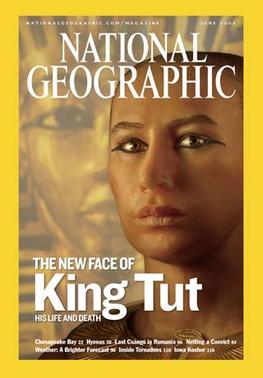
What is forensic facial reconstruction? It is the attempt to recreate the face of someone from just their skull.
There are several reasons why it might be necessary to try to work out what a person might have looked like from just their skull. One obvious reason is in criminal cases. If an unknown skeleton is found and there is no DNA or no result from the DNA, it is useful to try to work out what the person might have looked like. Seeing a face might spark someone’s memory or help police work out who the person was. Another reason is historical. We have many pictures of famous historical figures, but paintings are not always a true likeness. Paintings are often quite flattering because the painter would have wanted to make sure they received their pay and weren’t the victim of an unfortunate execution. Sometimes, there are no available paintings, and we want to know what the person might have looked like. This is where forensic facial reconstruction comes in. It is an art based on science.
There are two ways of reconstructing a face from a skull. The first is 2D reconstruction and the second is 3D. Both of these methods are done by forensic anthropologists in collaboration with artists. AI has come a long way in helping here, and can often produce more accurate reconstructions. They are also able to very quickly reapply variations, such as coloring, or hair, that would take the artists a long time.
2D reconstruction is done by taking a flat photograph of the front of the skull and adding markers for tissue depth. The tissue depth markers are set based on data taken from live people. There is no way of knowing how much fat a person had, or what color hair they had, but we all have the same muscles on our faces and these muscles are shaped by the shape of our skull beneath them. There are 43 facial muscles on the face, and we use all of them for making the facial expressions we need to communicate. If the skull has a square jaw, the face will have a square jaw. If the skull is long, the face will be long. The size of the brow ridge, the shape of the nasal chamber, the shape of the chin, the distance between the eye sockets, and many other things all have a great impact on the shape of our faces. The tissue depth markers take into account the thickness of the facial muscles, and, from that, an artist can draw the general shape of the face. There is no way of knowing what things like the lips and the ears looked like because all of the flesh will have vanished. It is an approximation, but it can be useful to jog someone’s memory. If the person is named, it can also be useful to work out if the skull in the possession of the police is that person’s skull.
3D facial reconstruction is the one we are probably all aware of. The forensic anthropologist works with a sculptor. They begin with the skull, or a cast of the skull, and layer on all of the facial muscles in order using modelling clay. They both have an intricate knowledge of the size of the muscles, where they go, and where they attach to the face. The forensic anthropologist looks at the skull to determine the sex and age of the person. They also find any injuries, such as a broken nose, that can alter the appearance of the face. They can look at the jaw and the way the teeth are attached and worn. The wear of the teeth can show how a person’s jaw was set and how large their jaw muscles were. When the muscles have been laid on, they build the lips and the nose before adding the skin and everything else.
The finished product will be a very lifelike figure because the sculptors are very skilled, but it may not look exactly like the person who owned the skull. There are just too many variables that can’t be known for the face to be exact. There is no way of knowing the true shape of the nose, because there is only the top part of the bone to go on. The lips and ears must be guessed at. Hair color cannot be known. The width of the eyes is generally known by the width of the eye sockets in the skull, but the way they are set in the face, or the skin and wrinkles around them cannot be known.
One of the problems is that there is not a large enough database of live people’s skin thickness to go on. If there was a far larger database, divided by sex, age, race, and so on, it would improve matters. AI software is helping a lot because it can more accurately and quickly display the muscles and skin. AI can also produce a variety of different versions of the face depending on criteria. It could do different hairstyles and colors, different sized lips and ears, and different shaped nose, and so on. Still, forensic facial reconstruction is a fascinating field. If you are interested, have a look for the reconstruction of King Tutankhamun. And this is what I learned today.
Image Fair use, https://en.wikipedia.org/w/index.php?curid=2004916
Sources
https://www.bionity.com/en/encyclopedia/Forensic_facial_reconstruction.html
https://naturalhistory.si.edu/sites/default/files/media/file/wibfacialreconstructionsfinal.pdf
https://www.linkedin.com/pulse/forensic-facial-reconstruction-iasrorg/
https://en.wikipedia.org/wiki/Forensic_facial_reconstruction
